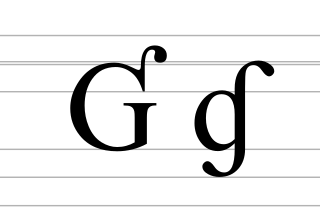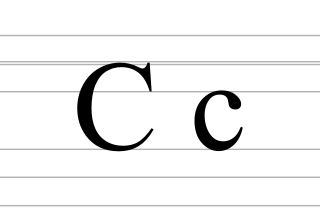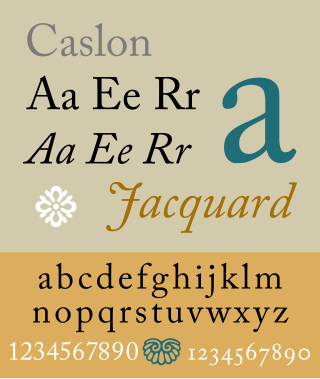
D, or d, is the fourth letter of the Latin alphabet, used in the modern English alphabet, the alphabets of other western European languages and others worldwide. Its name in English is dee, plural dees.

N, or n, is the fourteenth letter of the Latin alphabet, used in the modern English alphabet, the alphabets of other western European languages, and others worldwide. Its name in English is en, plural ens.

O, or o, is the fifteenth letter and the fourth vowel letter of the Latin alphabet, used in the modern English alphabet, the alphabets of other western European languages and others worldwide. Its name in English is o, plural oes.

T, or t, is the twentieth letter of the Latin alphabet, used in the modern English alphabet, the alphabets of other western European languages and others worldwide. Its name in English is tee, plural tees.
The double acute accent is a diacritic mark of the Latin and Cyrillic scripts. It is used primarily in Hungarian or Chuvash, and consequently it is sometimes referred to by typographers as hungarumlaut. The signs formed with a regular umlaut are letters in their own right in the Hungarian alphabet—for instance, they are separate letters for the purpose of collation. Letters with the double acute, however, are considered variants of their equivalents with the umlaut, being thought of as having both an umlaut and an acute accent.
A caronKARR-ən. or háček, is a diacritic mark placed over certain letters in the orthography of some languages, to indicate a change of the related letter's pronunciation. Typographers tend to use the term caron, while linguists prefer the Czech word háček.

EzhEZH, also called the "tailed z", is a letter, notable for its use in the International Phonetic Alphabet (IPA) to represent the voiced postalveolar fricative consonant. This sound, sometimes transcribed /zh/, occurs in the pronunciation of ⟨si⟩ in vision and precision, the ⟨s⟩ in treasure, and the ⟨g⟩ in beige.

Eng, agma, or engma is a letter of the Latin alphabet, used to represent a voiced velar nasal in the written form of some languages and in the International Phonetic Alphabet.

Ɲ is a letter indicating a palatal nasal. The lowercase form ɲ is used as an IPA symbol. The upper and lower case are used in the latin orthographies of some African languages.

Ɗ, known as D with hook, is a letter of the Latin alphabet. The lower case, represents a voiced dental implosive or a voiced alveolar implosive in the International Phonetic Alphabet. It is used with the same value in the orthographies of various languages, notably some African languages, such as Fula and Hausa, also in Sindhi and used in Shona from 1931 to 1955.

G with hook is a letter of the extended Latin alphabet. In the International Phonetic Alphabet, its small caps form represents the voiced uvular implosive and its lowercase form represents the voiced velar implosive. Because it occurs in the orthographies of some African languages, including some unofficial orthographies of Fula, it is included in the African reference alphabet.

Ƴ is a letter of the Latin alphabet, formed from Y with the addition of a hook. It is used in some African languages, such as Fula, to represent a palatalized glottal stop,, and in Hausa to represent a creaky voiced palatal approximant. In Noon, a language spoken in Senegal, ƴ represents a voiced palatal implosive.

L, or l, is the twelfth letter of the Latin alphabet, used in the modern English alphabet, the alphabets of other western European languages and others worldwide. Its name in English is el, plural els.

C, or c, is the third letter of the Latin alphabet, used in the modern English alphabet, the alphabets of other western European languages and others worldwide. Its name in English is cee, plural cees.
Unicode supports several phonetic scripts and notation systems through its existing scripts and the addition of extra blocks with phonetic characters. These phonetic characters are derived from an existing script, usually Latin, Greek or Cyrillic. Apart from the International Phonetic Alphabet (IPA), extensions to the IPA and obsolete and nonstandard IPA symbols, these blocks also contain characters from the Uralic Phonetic Alphabet and the Americanist Phonetic Alphabet.
Latin Extended-B is the fourth block (0180-024F) of the Unicode Standard. It has been included since version 1.0, where it was only allocated to the code points 0180-01FF and contained 113 characters. During unification with ISO 10646 for version 1.1, the block range was extended by 80 code points and another 35 characters were assigned. In version 3.0 and later, the last 60 available code points in the block were assigned. Its block name in Unicode 1.0 was Extended Latin.
In typesetting, the hook or tail is a diacritic mark attached to letters in many alphabets. In shape it looks like a hook and it can be attached below as a descender, on top as an ascender and sometimes to the side. The orientation of the hook can change its meaning: when it is below and curls to the left it can be interpreted as a palatal hook, and when it curls to the right is called hook tail or tail and can be interpreted as a retroflex hook. It should not be mistaken with the hook above, a diacritical mark used in Vietnamese, or the rhotic hook, used in the International Phonetic Alphabet.

B, or b, is the second letter of the Latin alphabet, used in the modern English alphabet, the alphabets of other western European languages and others worldwide. Its name in English is bee, plural bees.

With the adoption of letters from the International Phonetic Alphabet (IPA) in various national alphabets, letter case forms have been developed. This usually means capital (uppercase) forms were developed, but in the case of the glottal stop, both uppercase ⟨Ɂ⟩ and lowercase ⟨ɂ⟩ are used.

In the days of printing with metal type sorts, it was common to rotate letters and digits 180° to create new symbols. This was a cheap way to extend the alphabet that didn't require purchasing or cutting custom sorts. The method was used for example with the Palaeotype alphabet, the International Phonetic Alphabet, the Fraser script, and for some mathematical symbols. Perhaps the earliest instance of this that is still in use is turned e for schwa.















